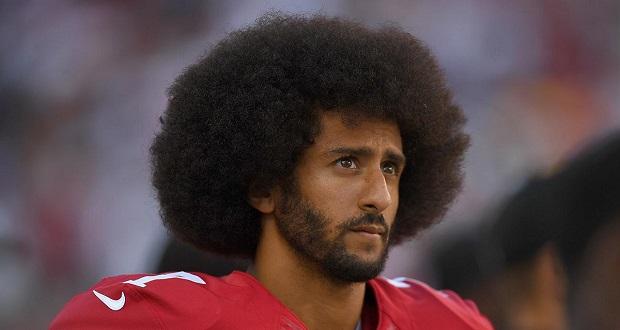If you follow NFL news, you probably know that Colin Kaepernick is still without a job for the 2017 season. This comes as a surprise because many have indicated his play is good enough to have attracted interest from teams by now. Last season, according to data from ESPN’s Stats & Information Group, Kaepernick completed 61 percent of his passes from the pocket, for 14 touchdowns and two interceptions. Keep in mind that quarterbacks who are considered “elite” tend to complete something in the mid-to-high 60s. While he is not perfect, many in the sports world agree that there aren’t that many football players who can do what Kaepernick can do, even if what Kaepernick does is far from perfect.
It appears something other than talent is affecting Kaepernick’s employment status. There has been some reporting that while some coaches do see Kaepernick’s potential and would not mind bringing him on board, NFL owners, on the other hand, have a different opinion on the matter. This situation has led many industry insiders to offer thoughts and advice.
Joe Montana, former American football quarterback who played in the NFL for 16 seasons, when asked by Sporting News in mid-July, attributed Kaepernick’s situation to his political stance over the past year when he refused to stand for the playing of the national anthem in protest of what he deemed were wrongdoings against African Americans and minorities in the United States. Montana characterized Kaepernick’s actions as a “distraction” in the locker room. In the NFL world, if you don’t fit in, you are not on the team for very long—apparently, regardless of how good you are.
Others have gone as far as attributing Kaepernick’s current status to his appearance. Michael Vick, former Philadelphia Eagles quarterback, in a recent article in DiversityInc, stated that Kaepernick needs to look more presentable in order to be taken seriously enough to land a spot on an NFL team. According to Vick, Kaepernick needs a haircut. But political stance apart, what does the way you look have to do with the way you perform?
Expectations to Conform
Expectations to conform, the necessity to “fit in”, and the importance of looking “presentable” are not standards limited to the sports world. According to data from the U.S. Department of Labor, some of the trends we are seeing in today’s workplace include higher numbers of older workers, women, ethnic minorities, and immigrants – just to mention a few.
Workplaces today are becoming increasingly multicultural, and one of the issues many employees face is the expectation to conform to established workplace norms. The problem is that many norms such as speaking up in groups, accepting public praise, or showing initiative are very much mainstream U.S. values that are not shared by all groups. Yet, despite increased diversity, many are expected to conform to norms they don’t subscribe to; so, instead of putting their efforts into “thriving”, much of their energy is spent on “surviving” within the company.
Because workplaces are increasingly diverse, managers and supervisors today need to understand the “cultural programming” every employee brings to the workplace. How close you stand to someone with whom you are talking, whether or not you maintain eye contact with your supervisor, how you handle conflict, how you respond to stress, and how you communicate are all determined by our cultural programming. Personal appearance may also dictated by our cultural programming.
Personal Appearance and the Workplace
How many times have we been told not to judge a book by its cover? Yet, how many snap judgements are made about potential candidates simply based on their appearance? How would you judge a candidate who came for her interview in a bright silk dress and lots of jewelry, as opposed to the traditional/expected dark suit? Does her wardrobe choice have anything to do with her ability to perform? Could managers, either consciously or unconsciously, be discounting qualified applicants because of their personal choices? It is important for managers to understand that there are many factors that dictate what candidates wear and cultural programming is a significant one.
Hair is another appearance hot spot because, again, there are many variations on what is appropriate or acceptable. Hindus, for example, believe their hair should never be cut and men often wrap their heads in a turban. Orthodox Jewish men wear dreadlocks. Muslim women wear a hijab in the presence of adult males outside of their immediate family. Sometimes, a hairstyle is chosen to make a statement. In the 60’s, for example, Afros were used to send a message that “Black is beautiful.” Sinead O’Connor, an Irish singer-songwriter, shaved her had to draw attention to her political protests. The point is that someone’s hair or hairstyle can trigger an unconscious bias or some kind of assumption.
In fact, in the recent study released by the Perception Institute on explicit and implicit attitudes toward black women’s hair, the authors revealed that even though more black women are embracing natural hairstyles, biases toward natural hair continue to exist, especially in the workplace. Many of the respondents felt that natural hairstyles are not professional. Even more worrisome is the fact that in September 2016, a federal court ruled that companies can fire people just for having dreadlocks.
In a 3-0 decision, the 11th U.S. Court of Appeals ruled in favor of Catastrophe Management Solutions, an insurance-claims processing company in Alabama that require all employees project “a professional and businesslike image.” The company’s decision not to hire a Black woman because she had dreadlocks was acquiesced. Dreadlocks, as many know, are a manner of wearing the hair that is physiologically and culturally associated with people of African descent. A white hiring manager told the candidate she could have the job if she changed her hairstyle. In the end, the court asserted that it is legal for companies to refuse employment based on hairstyles. We must ask ourselves: Why should employers have the right to strip individuals of the option to wear whatever hairstyle they chose?
Creating Inclusive Workplace Environments
When evaluating a potential candidate, hiring managers need to understand that a candidate’s cultural programming, their individual personalities, as well as their degree of acculturation to the U.S. mainstream culture all need to be taken into consideration. For example, while mainstream norms dictate that individuals maintain eye contact when speaking, managers also need to consider that (a) some individuals may be shy and therefore prefer to avert their eyes, or (b) certain cultural orientations dictate you should not maintain direct eye contact, especially when speaking with someone in a position of authority. Neither the former nor the latter relate to competence or ability to perform.
With regards to dress and appearance, it is important that managers also understand that the notion of “dress for success” carries different connotations for different individuals. It could mean a shirt and tie for some while, for others, a dashiki. So before reacting to a candidate’s appearance, stop to consider the meaning the candidate attaches to appearance and what their cultural norm dictates regarding dress and appearance.
As a hiring manager, you need to be able to identify any areas where difference in programming and expectations may cause a potential conflict and use that information to help you bridge those cultural barriers. You need to know when a candidate’s behavior and appearance should be interpreted differently, and you need to strive to create an environment where diverse norms (yours, the company’s, and the candidate’s) can coexist.
Managers also need to understand that ethnocentrism is one of the main saboteurs to diversity and inclusion. When looking at other cultural norms, it is easy to make judgements about those norms that are different from our own. Cultural comparisons are natural. Judging someone’s norms in a less favorable light is a problem, and it comes from a place of ethnocentrism. Get rid of the “my way is the best way” attitude and recognize that all cultural norms have advantages and disadvantages. Smart leaders and managers know the value of truly inclusive organizations and strive to create an environment where employees are accepted and valued for what they can contribute, regardless of lifestyle variations, and variety in dress and grooming.
Back to Kaepernick
Kaepernick’s employment situation today, if indeed attributed to appearance and not talent, seems to be a reflection of the overall culture within the NLF. In the article Three Leagues, 92 Teams and One Black Principal Owner, the author argues that the NFL still encapsulates the prevailing white male, conservative ethos of modern America, more so than any of the other leagues. The NFL, simply put, is the league of “well-off, conservative, white males”. In fact, data from a 2013 study from the Institute for Diversity and Ethics in Sport confirmed that 97% of majority owners in the NFL are white. Similarly, eighty-eight percent of head coaches are White. The majority of the players (66%), on the other hand, are African American.
Kaepernick is likely being urged to conform to cultural norms that are not his own. This is happening at a time when changing national demographics and the need for more inclusive mindsets are becoming the norm for which effective leaders should be striving. Kaepernick should not have to give up a significant part of his identity in order to be allowed to play. Owners and coaches do not have the right to strip individuals of the option of wearing whatever hairstyle they choose—especially when hair style is an unlikely indicator of performance in the field.
In fact, the Pentagon, which originally forbade women from wearing their hair in cornrows, dreadlocks, twists, and double ponytails, has reversed its ruling after some urging from female members of the Congressional Black Caucus. The reason for this reversal was that the recommended styles were impossible to maintain for women with natural hair. If the Pentagon has seen the light, surely, so should the NFL. Employers who are expecting candidates to “fit in” are, in essence, sending a red flag that differences are unwelcome.



















